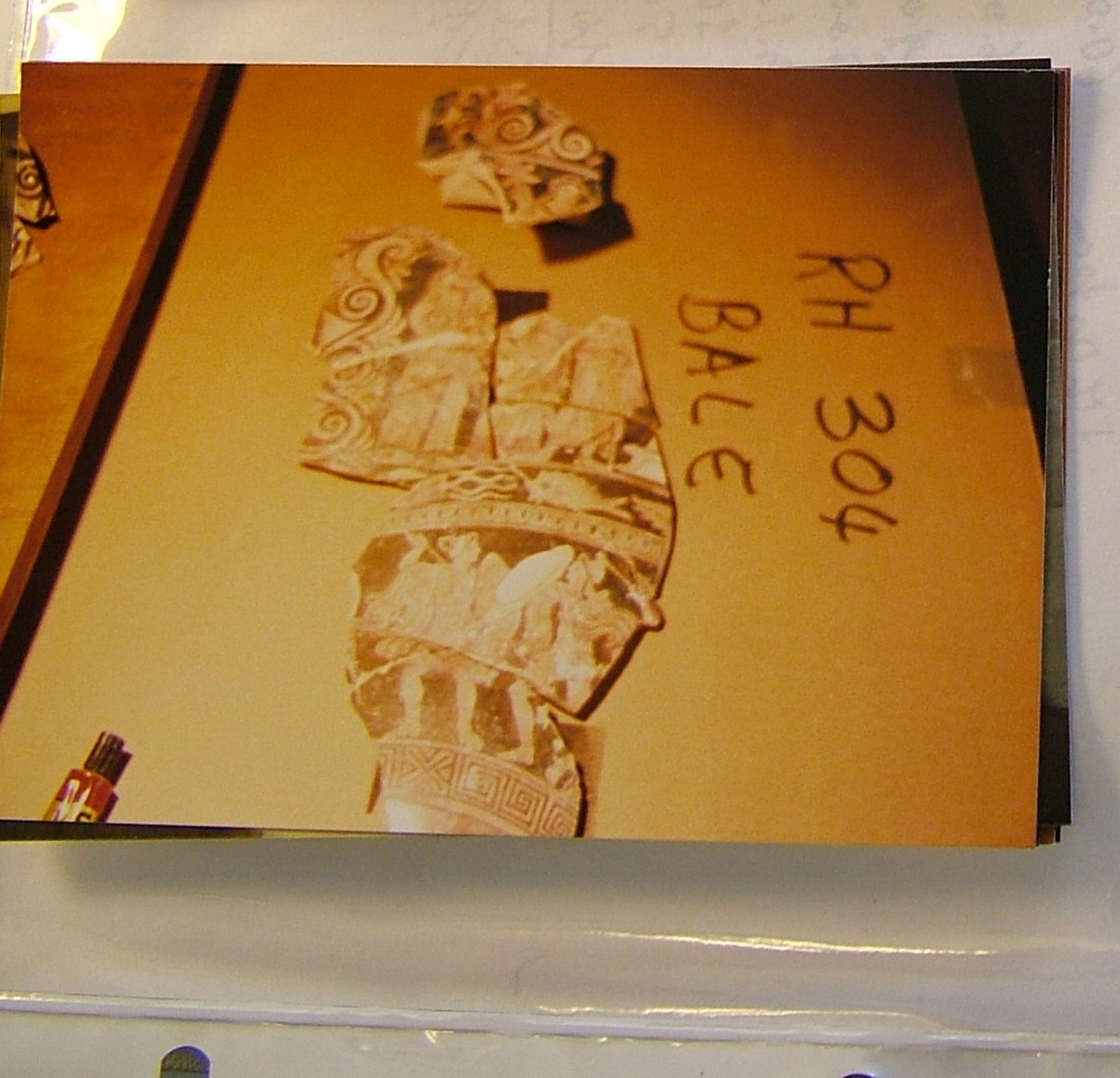Object Description
Six Fragments of Apulian Vase
Six fragments of a large Apulian vase, 4nd Century BC, depicting draped female figures, a scene from Amazonomachy and, between the two zones, another decorated with sea creatures.
Identification Date
November 2018
Identification Location
Gianfranco Becchina Archive
Artefact History
February 1988
In the Becchina archive, the six fragments are depicted unrestored, on top of a cardboard box, which reads ‘Bale’ (Basel, in Switzerland), where Becchina operated his antiquities gallery named ‘Antike Kunst Palladion’ and various warehouses. Next to the fragments, a tube containing glue is also depicted. Documents dated February 1988 indicate that Becchina acquired the fragments from the Italian looter Raffaele Monticelli.
May 1988
Other documents in the Becchina archive suggest that Becchina sold the fragments, among other antiquities, to Robin Symes and Christos Michaelides.
2014
Following information provided by the Italian authorities, the Geneva Prosecution Office discovered at the Free Port of Geneva a warehouse that used to belong to Robin Symes and Christos Michaelides. In there, 45 wooden crates containing all kinds of antiquities were discovered, among which ca. 1,500 fragments of Apulian vases, including these six fragments from a certain Apulian vase.
2016
The 45 crates were repatriated to Italy and an exhibition of about half of the confiscated antiquities was organised in Rome.
January 2018
Dr Vinnie Nørskov, Associate Professor of Archaeology at Aarhus University and Director of the Aarhus University Museum of Ancient Art, succeeded in securing, from the Italian authorities, the long-term loan of the ca. 1,500 confiscated Apulian fragments, for academic research at the museum, as part of an unprecedented project on networks research and re-contextualization.
November 2018
Using the Becchina images, the six fragments were identified by Christos Tsirogiannis during the first recording of the loaned material.
Artefact Status
The fragments are still on loan at the Aarhus university Museum of ancient Art.
Read more:
External link
